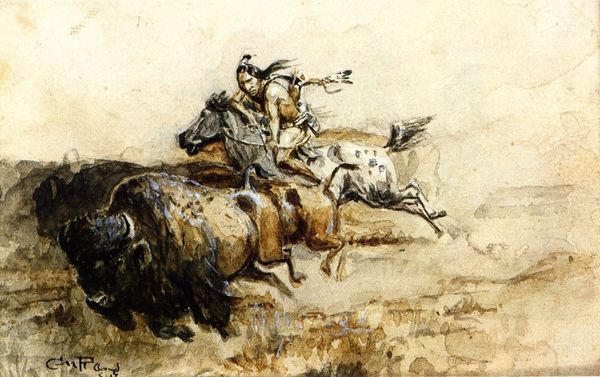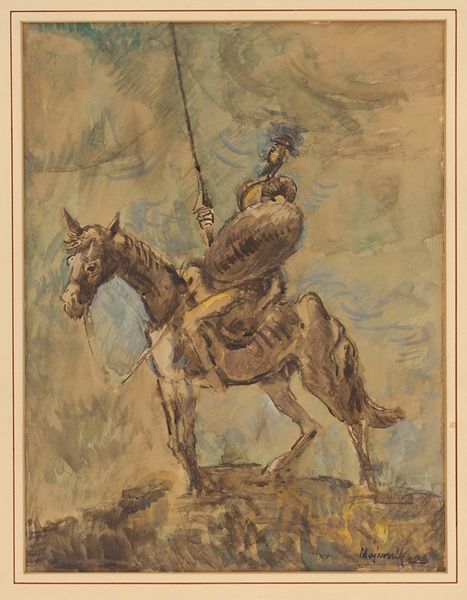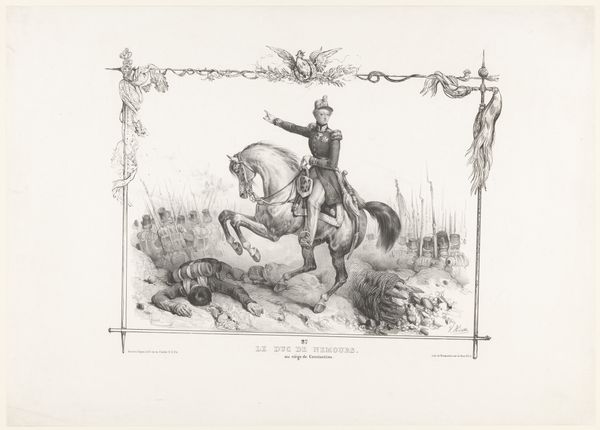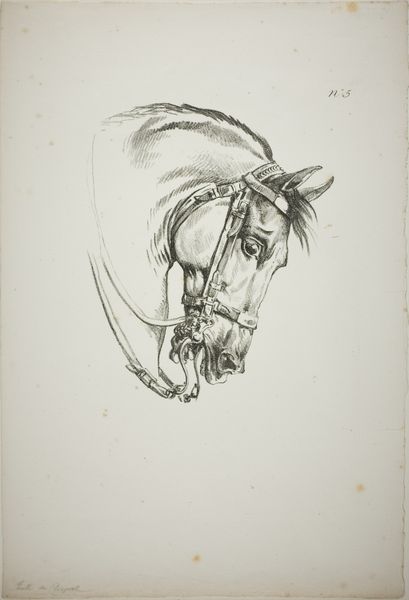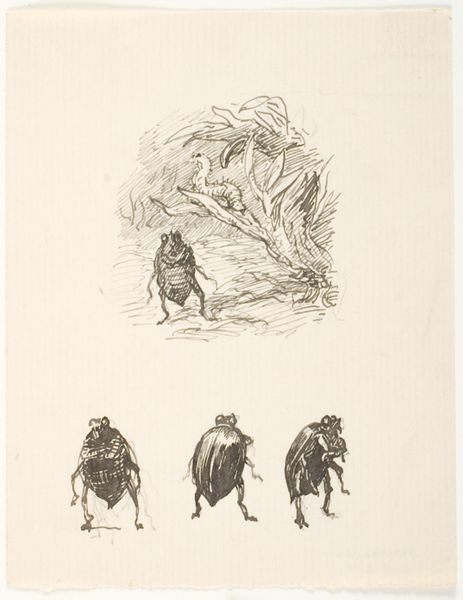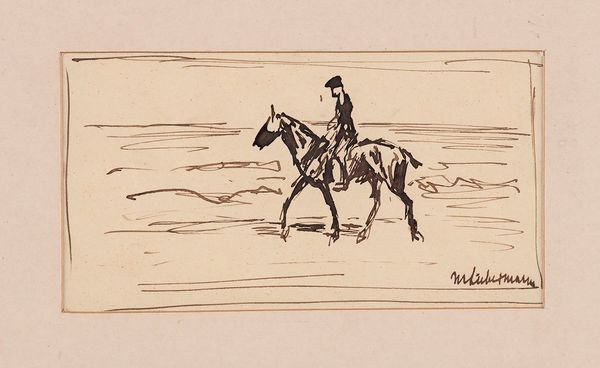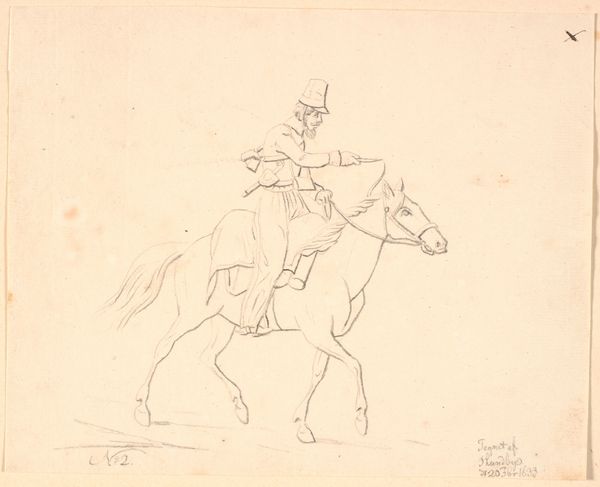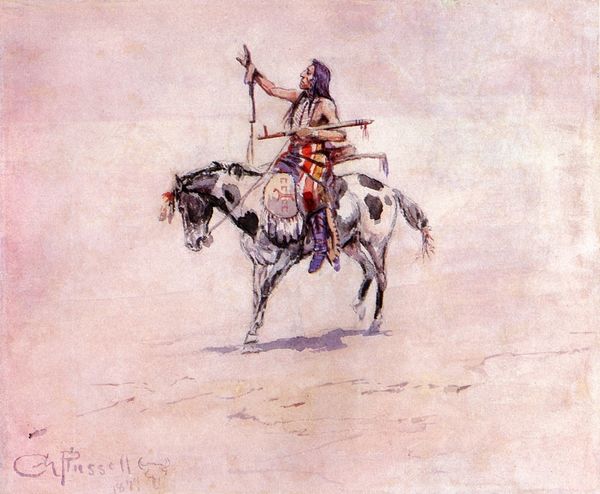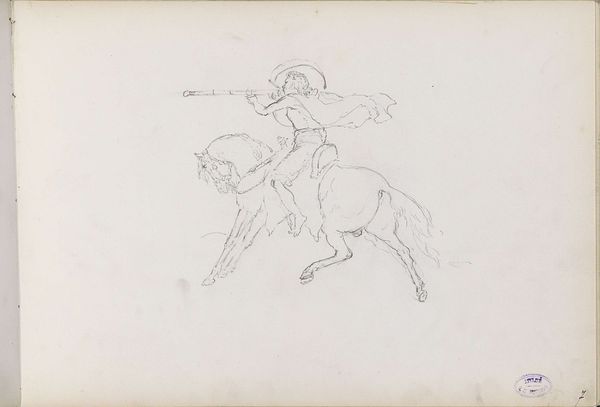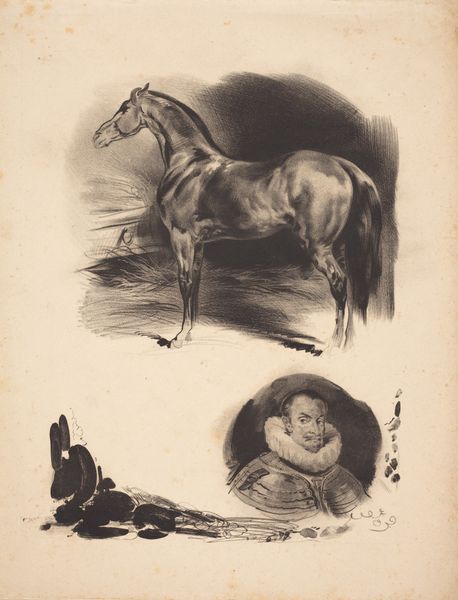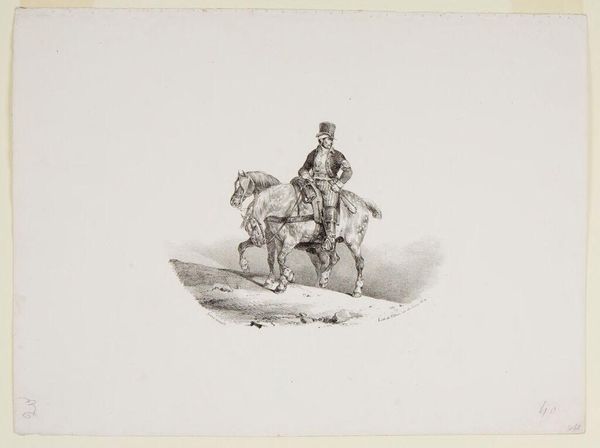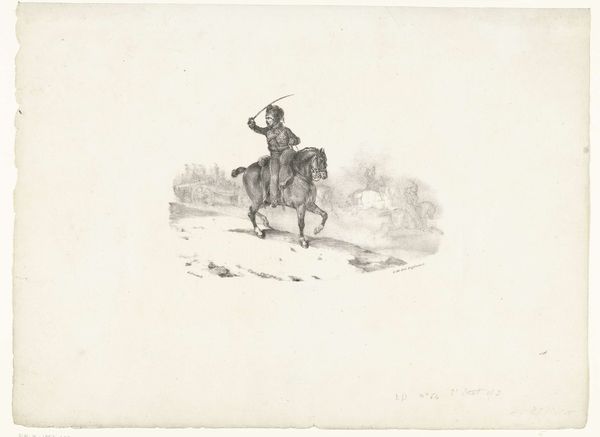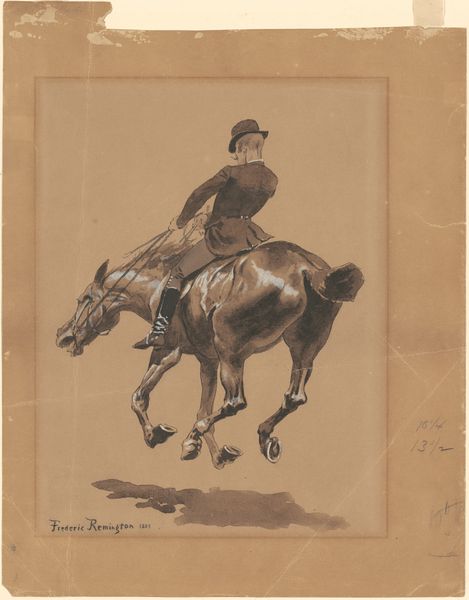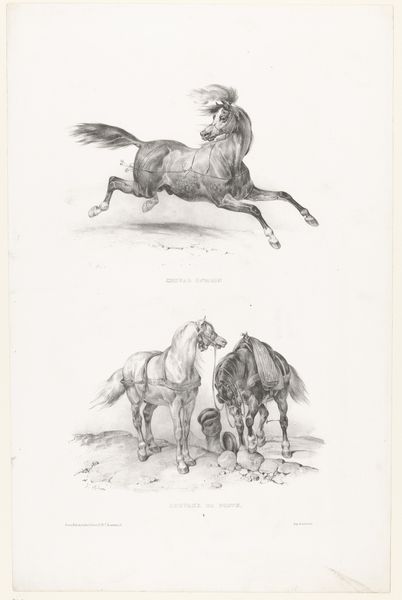
drawing, watercolor, ink
#
drawing
#
landscape
#
watercolor
#
ink
#
genre-painting
Copyright: Public domain
Editor: So, this is Charles Russell's "Bucking Horse and Cowgirl," dating to 1925. It’s a lively watercolor and ink drawing, and the whole thing feels…unstable. Like I’m about to be thrown from the saddle myself. What strikes you when you look at it? Curator: Unstable, eh? I feel that. It's the moment right *before* everything goes haywire, isn't it? Russell, bless his artistic soul, captures that wild, teetering edge between control and chaos. For me, it's a glimpse into the mythology of the West, but through a rather romantic lens, wouldn’t you say? This isn't some stoic cowboy, it's a… cowgirl! Hair flying, hat in the air, mid-buck. It feels less about the taming and more about the thrill. Do you get a sense of the era from it at all? Editor: I suppose there’s a feeling of… liberation? She seems more gleeful than terrified, and maybe that’s reflective of the changing role of women in the '20s? Curator: Precisely! There is something about it. That is really interesting to consider. Now look closer—notice the ground kicking up, almost an afterthought in its brushstrokes? And yet, it's the very anchor of the piece. Without it, we lose that kinetic energy, that feeling of the horse actually *moving*. He's daring us to focus not just on the action but on the very feeling of being untethered. Is it working for you? Editor: Definitely! The looseness of the line work communicates such a sense of spontaneity. I think I initially read that as unstable, but now I see it’s more about energy and movement. It really is exciting. Curator: And that’s where the magic lies, right? What starts as a first impression shifts with a little bit of looking, a bit of questioning. Maybe Russell knew exactly what he was doing, capturing the *feeling* of freedom rather than just illustrating it.
Comments
No comments
Be the first to comment and join the conversation on the ultimate creative platform.
